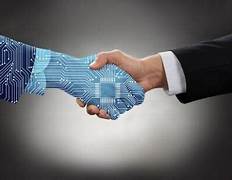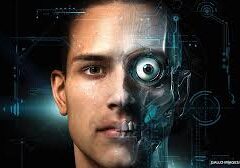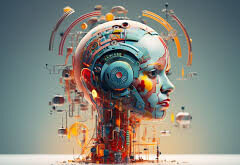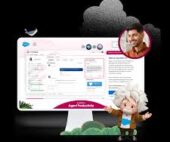Many artists, writers, musicians, and creators are facing fears that AI is taking over their jobs. On the surface, generative AI tools can replicate work in moments that previously took creators hours to produce—often at a fraction of the cost and with similar quality. This shift has led many businesses to adopt AI for content creation, leaving creators worried about their livelihoods. Yet, there’s another way to view this situation, one that offers hope to creators everywhere.
AI, at its core, is a tool of mimicry. When provided with enough data, it can replicate a style or subject with reasonable accuracy. Most of this data has been scraped from the internet, often without explicit consent, to train AI models on a wide variety of creative outputs. If you’re a creator, it’s likely that pieces of your work have contributed to the training of these AI models. Your art, words, and ideas have helped shape what these systems now consider ‘good’ in the realms of art, music, and writing. AI can combine the styles of multiple creators to generate something new, but often these creations fall flat. Why?
While image-generating AI can predict pixels, it lacks an understanding of human emotions. It knows what a smile looks like but can’t grasp the underlying feelings of joy, nervousness, or flirtation that make a smile truly meaningful. AI can only generate a superficial replica unless the creator uses extensive prompt engineering to convey the context behind that smile. Emotion is uniquely human, and it’s what makes our creations resonate with others. A single brushstroke from a human artist can convey emotions that might take thousands of words to replicate through an AI prompt.
We’ve all heard the saying, “A picture is worth a thousand words.” But generating that picture with AI often takes many more words. Input a short prompt, and the AI will enhance it with more words, often leading to results that stray from your original vision. To achieve a specific outcome, you may need hours of prompt engineering, trial, and error—and even then, the result might not be quite right. Without a human artist to guide the process, these generated works will often remain unimpressive, no matter how advanced the technology becomes. That’s where you, the creator, come in.
By introducing your own inputs, such as images or sketches, and using workflows like those in ComfyUI, you can exert more control over the outputs. AI becomes less of a replacement for the artist and more of a tool or collaborator. It can help speed up the creative process but still relies on the artist’s hand to guide it toward a meaningful result.
Artists like Martin Nebelong have embraced this approach, treating AI as just another tool in their creative toolbox. Nebelong uses high levels of control in AI-driven workflows to create works imbued with his personal emotional touch. He shares these workflows on platforms like LinkedIn and Twitter, encouraging other creators to explore how AI can speed up their processes while retaining the unique artistry that only humans can provide.
Nebelong’s philosophy is clear: “I’m pro-creativity, pro-art, and pro-AI. Our tools change, the scope of what we can do changes. I don’t think creative AI tools or models have found their best form yet; they’re flawed, raw, and difficult to control. But I’m excited for when they find that form and can act as an extension of our hands, our brush, and as an amplifier of our artistic intent.”
AI can help bring an artist 80% of the way to a finished product, but it’s the final 20%—the part where human skill and emotional depth come in—that elevates the piece to something truly remarkable. Think about the notorious issues with AI-generated hands. Often, the output features too many fingers or impossible poses, a telltale sign of AI’s limitations. An artist is still needed to refine the details, correct mistakes, and bring the creation in line with reality. While using AI may be faster than organizing a full photoshoot or painting from scratch, the artist’s role has shifted from full authorship to that of a collaborator, guiding AI toward a polished result.
Nebelong often starts with his own artwork and integrates AI-generated elements, using them to enhance but never fully replace his vision. He might even use AI to generate 3D models, lighting, or animations, but the result is always driven by his creativity. For him, AI is just another step in the creative journey, not a shortcut or replacement for human effort.
However, AI’s ability to replicate the styles of famous artists and public figures raises ethical concerns. With platforms like CIVIT.AI making it easy to train models on any style or subject, questions arise about the legality and morality of using someone else’s likeness or work without permission. As regulations catch up, we may see a future where AI models trained on specific styles or individuals are licensed, allowing creators to retain control over their works in the same way they license their traditional creations today.
The future may also see businesses licensing AI models trained on actors, artists, or styles, allowing them to produce campaigns without booking the actual talent. This would lower costs while still benefiting creators through licensing fees. Actors and artists could continue to contribute their talents long after they’ve retired, or even passed on, by licensing their digital likenesses, as seen with CGI performances in movies like Rogue One.
In conclusion, AI is pushing creators to learn new skills and adapt to new tools. While this can feel daunting, it’s important to remember that AI is just that—a tool. It doesn’t understand emotion, intent, or meaning, and it never will. That’s where humans come in. By guiding AI with our creativity and emotional depth, we can produce works that resonate with others on a deeper level.
For example, you can tell artificial intelligence what an image should look like but not what emotions the image should evoke.
Creators, your job isn’t disappearing. It’s evolving. Will you rise to the challenge or let fear hold you back? Trust your creative instincts, and the world will still seek out your unique, emotionally resonant work.












